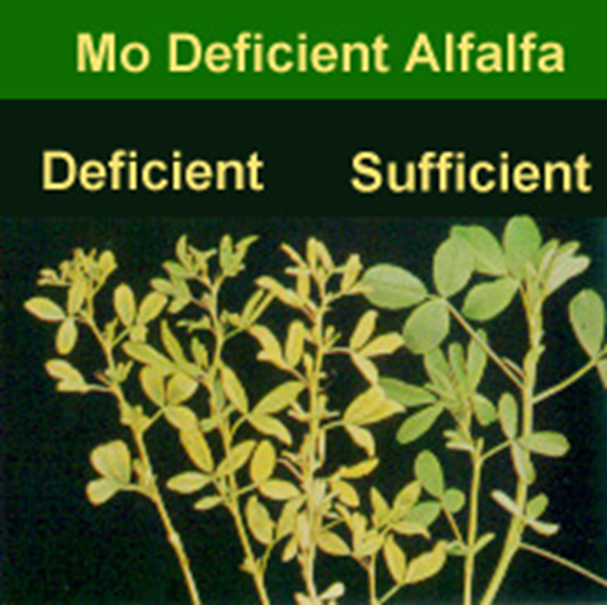
Plant tissue testing is the only way to confirm a molybdenum deficiency. Collect samples from the top 6-inches or one-third of a plant, or from whole plant samples collected from baled hay. Plant samples with less than 0.3 ppm are considered deficient, 0.4 to 1.0 ppm marginal, 1 to 5 ppm adequate, and 5 to 10 ppm high. Concentrations over 10 ppm may be toxic to livestock. High moly concentrations in alfalfa should be offset with copper concentrations that are twice as high as molybdenum concentrations to prevent livestock toxicity.
The most common moly fertilizer is sodium molybdate (40% molybdenum), but ammonium molybdate can be used as well. Follow the label carefully and apply during winter or before re-growth has resumed after cutting. Broadcast on the soil surface only and avoid application to any plant foliage. A single application of 0.4 pounds per acre of molybdenum should last from 5 to 15 years. Thorough records of molybdenum application times and amounts along with repeated tissue testing are essential to determine when to apply or reapply this nutrient.
Do not apply excessive molybdenum (that is double or triple coverage with the sprayer at the end of the field) because the concentration of the element in alfalfa may become so high that the forage becomes toxic to livestock. For the same reason, do not apply molybdenum directly on foliage. Analyzing the top one-third of the plant for both copper and molybdenum can detect deficiencies and suboptimum ratios of these elements in forages.
Deficiency often occurs on slightly acid to very acid soils. Increasing the soil pH increases solubility and availability of soil molybdenum.
Attached Images:
